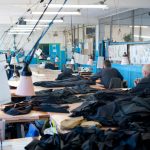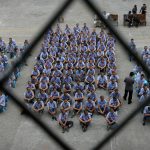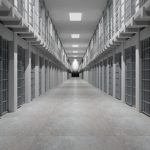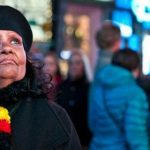Panther, Prisoner, Professor: A Profile of Angela Davis
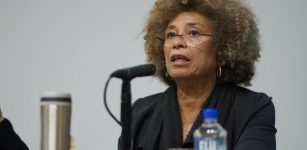
Angela Davis has been at the forefront of subversive political thought since the mid-60s. Currently, emerita professor in the History of Consciousness at the University of California, Santa Cruz, Ms Davis has been constantly fighting oppression throughout her career.
Davis grew up in the 1940s in the Dynamite Hill area of Birmingham, Alabama. It was a middle class neighbourhood which gained notoriety for the Ku Klux Klan’s bombings of local African American family homes.
After studying in France and Germany for several years, Davis returned to the United States in 1967. She was drawn back to the country due to the burgeoning black liberation movement. She joined the Student Nonviolent Coordinating Committee and became associated with the Black Panthers.
The University of California hired Ms Davis as an assistant professor of philosophy in 1969. However, at the behest of then-Californian governor Ronald Reagan, the university’s Board of Regents tried to fire her, as she was a member of the US Communist Party.
The kidnapping of a judge
The Soledad Brothers were three African American inmates, who were accused of killing a white prison guard in California’s Soledad prison in January 1970. Ms Davis believed the men were wrongly accused, and she went on to become the co-chair of the Soledad Brothers Defence Committee.
Well-known prison rights activist, George Jackson, was one of the three accused men. Prison guards eventually shot Jackson dead in August 1971, claiming he was trying to escape from gaol. The other two accused men – Fleeta Drumgo and John Clutchette – were eventually acquitted of the murder.
In an apparent show of solidarity, George Jackson’s 17-year-old brother, Jonathan Jackson, stormed the Marin County courthouse, during the trial of James McClain on August 3 1970. McClain was accused of stabbing a prison guard.
The heavily-armed Jackson, along with McClain and two other prisoners present at the trial, took three jurors, the district attorney and Judge Harold Haley hostage.
As they were fleeing the scene, a shootout with police ensued. Judge Haley was killed by the discharge of a shotgun that had been taped to his neck. Jackson and another prisoner were killed as well.
The shotgun and two handguns used in the kidnapping were subsequently found to be registered in Ms Davis’ name and had been bought two days prior to the incident.
A political prisoner
Under a Californian law, which prescribed that anyone involved in a major crime is guilty as a direct participant, Davis was charged with one count of murder and five counts of kidnapping. She then fled California and went into hiding for several months.
Davis was soon placed on the FBI’s Most Wanted List. She was the third woman ever to have been listed.
In October 1970, Davis was picked up by authorities in New York City and extradited to California to stand trial. There was a groundswell of support for Davis both domestically and internationally. She was imprisoned for 18 months, and was eventually acquitted of all charges by a jury in June 1972.
Slavery to the prison
Professor Davis has been a critic of the US prison system for decades. She posits that there is a direct link to the abolition of slavery in the United States and the beginning of the nation’s modern prison system.
This began in the south of the States with the system of convict lease, which allowed prison labour to be leased out by private interests, such as plantation owners. It “transferred symbolically significant numbers of black people from the prison of slavery to the slavery of the prison,” Ms Davis wrote.
Today, the United States is the greatest incarcerator of people on earth, with more than 2.3 million people behind bars. The imprisonment rate is at 700 inmates per 100,000 adults.
Sixty percent of the US prison population is made up of people of colour, while they only account for 30 percent of the overall population.
The prison-industrial complex
In the late 1990s, Davis popularised the idea of the prison-industrial complex: a system where the government incarcerates large numbers of disadvantaged people, whist turning a profit via their labour, with the help of private industry.
Under this system of mass incarceration, social problems – such as homelessness, unemployment, drug dependency and illiteracy – are seemingly hidden, as large numbers of people are locked away, Davis explained. And with the increasing privatisation of US incarceration, corporations are heavily investing in the penal system and making great financial gains out of the cheap labour of those behind bars.
Last year, the biggest prison strike in the nation’s history occurred, when tens of thousands of inmates in 40 prisons across 24 states joined together to try and bring about an end to free prison labour.
Davis outlines there are many other components to the prison-industrial complex than just public and private gaols. It incorporates juvenile correctional facilities, military prisons and interrogation centres. “Moreover, the most profitable sector of the private-prison business is composed of immigrant detention centres,” Ms Davis has said.
The prison abolition movement
The professor, who’s now in her 70s, is one of the leading proponents of the prison abolition movement. Abolitionists have the aim of eliminating incarceration, along with policing and the ever encroaching system of mass surveillance.
Critical Resistance was co-founded by Ms Davis back in 1997. The grassroots movement has the aim of dismantling the prison-industrial complex. They believe the prison system isn’t broken, but it’s working as it’s supposed to do, which is to oppress and criminalise marginalised groups within society.
Sisters Inside is an Australian prison abolitionist organisation that advocates for the human rights of women that have become involved with the criminal justice system. Angela Davis has an affiliation with this group and has made regular trips to Australia to talk at the Is Prison Obsolete conferences.
“From where we are now, sometimes we can’t really imagine what abolition is going to look like,” the Critical Resistance website states. Indeed, abolitionists don’t claim to have all the answers. Their goal isn’t just to pull down the prison walls, but it’s to transform society as a whole.
As Davis pointed out at a recent Drug Policy Alliance speech in the US, “We cannot simply close down prisons, but we have to create the kind of institutions that will allow people to change and to heal and to develop.”


